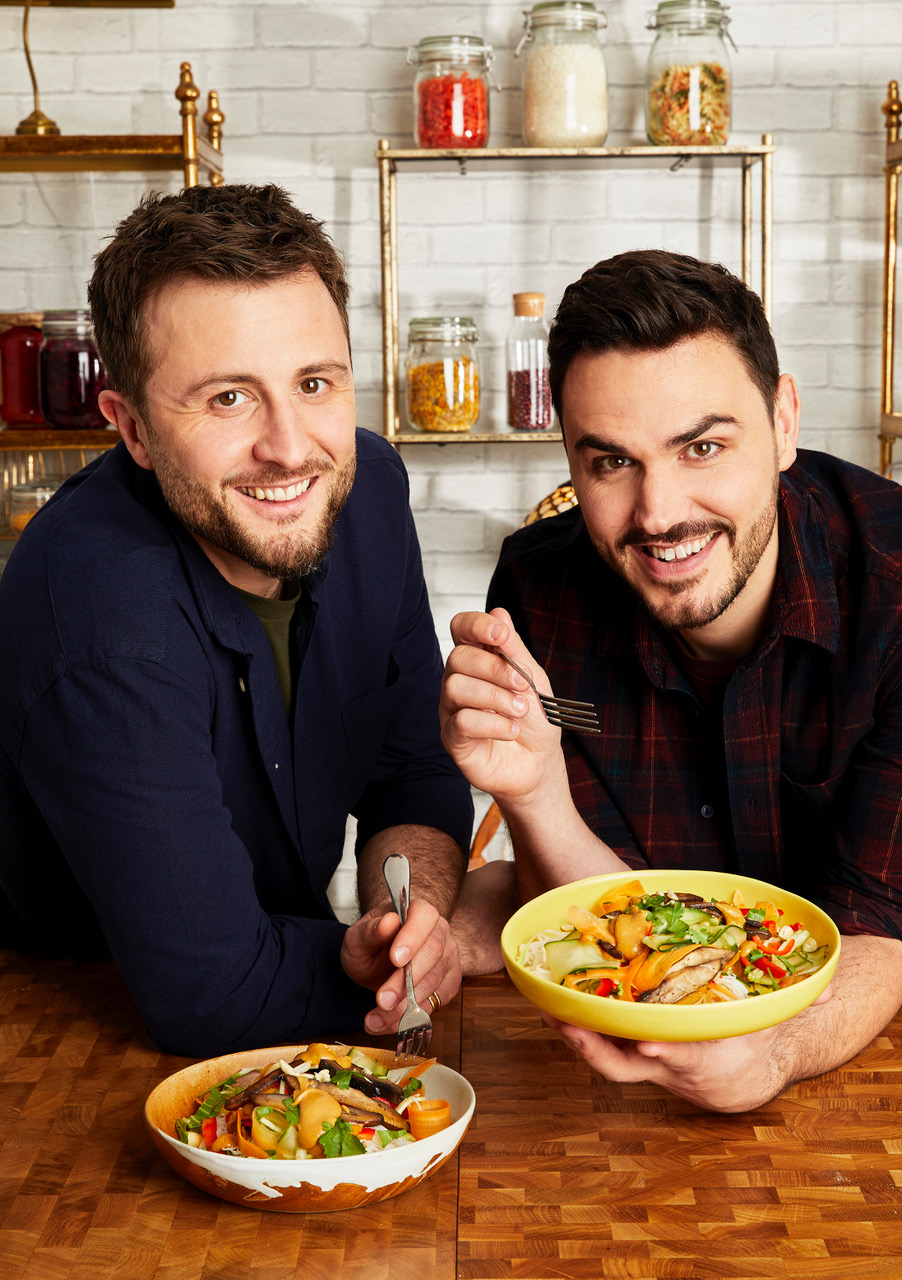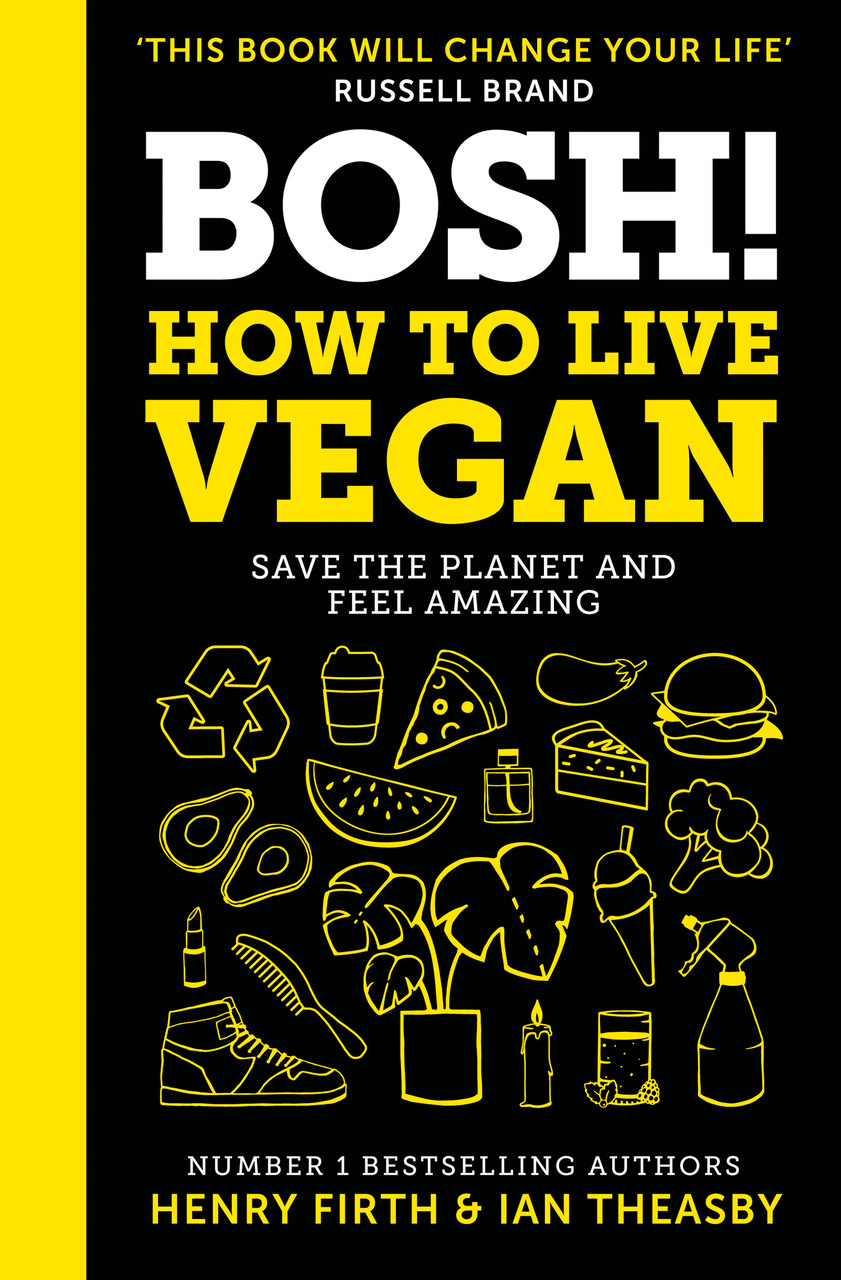5 health tips for a vegan diet
Henry Firth and Ian Theasby share their tips for following a healthy diet from their new book, How to Live Vegan

A well-planned, plant-based diet is thought to be one of the best diets for human and planetary health. With a bit of forward-planning, a vegan diet can be beneficial for people at all stages of life.
One of the best things about being vegan is that, the very thing that can save our planet is also a better way to live. The chances are, you will feel better on a plant-based diet; it can help you live a longer, happier, healthier life, while still delivering all the deliciousness that you’re used to.
Protein Power
People are always worried that they’re never going to get enough protein on a vegan diet, and that if they’re vegetarian, they’re going to have to eat loads of eggs to compensate. But we’re here to tell you, you’ll be fine!
Our body needs protein to help build and repair itself. Protein is made up from combinations of 20 amino acids. The human body can make most of these, but there are nine that we need to get through our diet: these are called the essential amino acids.
‘Complete proteins’ contain all nine essential amino acids; meat and animal products are all complete proteins. In contrast, there are only a handful of plant-based sources of protein that contain all nine amino acids; namely quinoa, buckwheat, and soya. But that doesn’t mean that in order to fulfil your protein needs, you must only eat those sources of protein. You need to get a good mix throughout the day to make sure you get all nine of the essential amino acids across everything that you eat. Any time you eat grains and beans together (such as rice and peas, or chilli with rice) you are getting all those amino acids together.

Vital Vitamins
It is possible to get all the nutrients you need on a vegan diet from eating a good variety of plants, with one exception: vitamin B12. This is because B12 is made by soil bacteria, and these days our food and water is (thankfully) usually clean and soil-free. It’s now really easy to get enough B12 by consuming fortified milks, Marmite, nutritional yeast, or a regular supplement.
However, there are some nutrients that are more freely available in animal products, so you will need to ensure you are eating adequate amounts of these, including calcium and omega-3 fatty acids. It’s also important to get enough iron, zinc, and vitamin D.*
People often worry about calcium. Make sure you drink plenty of fortified plant-based milk and eat green leafy veg. Likewise with iron, which can be found in whole grains, nuts and seeds, beans, and green veg, so pack your diet with these!
As back-up, we take a daily multivitamin. We also eat flaxseeds and chia seeds for their omega-3, and we occasionally take an algae-based omega-3 supplement. We may also use a vitamin D spray if we feel we haven’t seen the sun for a while…
When we put together a plate of food, we roughly aim for it to be made up of 50% fruits and veggies, 25% whole grains and 25% plant-based protein: the 50/25/25 rule. This is also broadly in line with the NHS Eatwell Plate, Canadian Food Plate and Vegan Power Plate. We call it the rainbow ratio, and it’s an easy way to aim for a balanced diet – no laborious weighing or measuring out of ingredients or portion sizes. It will ensure you are getting loads of fruits and veggies in your life on a daily basis, and adequate amounts of protein and grains without any faff.
At every meal, as well as varying the colours, think about different textures, spices, and seasonal foodstuffs to give your body a broad range of vitamins and minerals. Mixing different protein sources across the day will also mean you’ll get all the protein you need.
Your parents always told you to eat your greens, and they weren’t wrong! Get as much dark green food in as you can, turbo-charging your daily diet with kale and spinach-rich green smoothies. Anything dark green is packed with micronutrients that your body loves, so gorge on them. We like to kick-start every day with a massive green smoothie – it’s such a great way to get ahead on your plant-based goodness!
Follow the 80/20 rule: 80% healthy and 20% whatever you fancy. It’s OK to eat a more unhealthy option from time to time, especially if it’s home-cooked. Just balance it out with healthy and colourful foods the rest of the time. Food is there to be enjoyed! It plays a huge part in our culture, in our family lives, and in our sense of wellbeing, so it’s really important to find a way of eating that fits your lifestyle and makes you feel good. Maybe you will decide to eat healthily in the week and ease off at the weekend – whatever works for you.
We like to back up all our good eating with a daily multivitamin and B12 booster. This takes away any worry about hitting our nutrition goals. Take responsibility for learning some basic nutrition and, if you have concerns, think about checking with your doctor to make sure all is as it should be.
Watch out!
Some vitamin pills are coated with gelatine, which is an animal product, so look for vitamins that are vegan-friendly. Obviously, avoid fish oils. Some children’s vitamins can be coloured, so make sure they use vegan-friendly dyes. Most of the big brands have products made with vegans in mind, so it’s easy to find good alternatives.
*Craig, W. J. (2009). Health effects of vegan diets. The American Journal of Clinical Nutrition, 89(5), 1627S–1633S. Retrieved from https://academic.oup.com/ ajcn/article/89/5/1627S/4596952.

How to Live Vegan by Henry Firth and Ian Theasby is published on 3 October, 2019 (HQ, HarperCollins, £9.99).










_1_825_1238_int.jpg)

